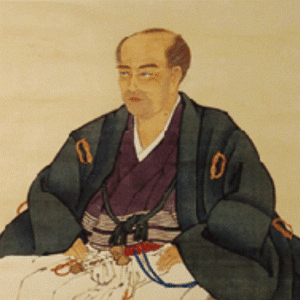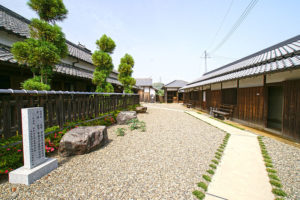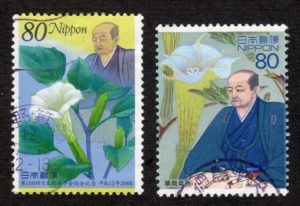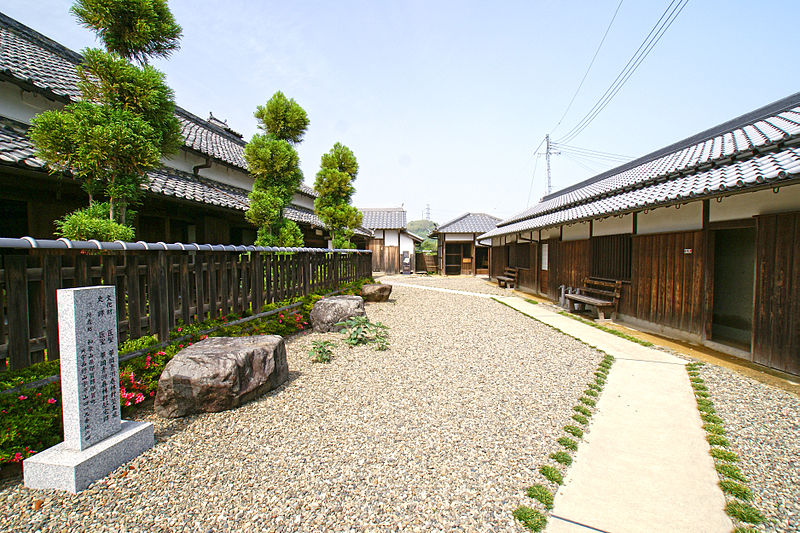[The world’s first surgery under general anesthetic by Seishu Hanaoka]
Seishu Hanaoka is a Japanese doctor in the Edo era, who succeeded in the world’s first surgery under general anesthetic.
Seishu was born in 1760 in Kinokawa city of Wakayama prefecture (formerly called Kiinokuni Nagagun) in a doctor family for generations in the village. An epic Ukiyoe painter Hokusai Katushika was born in the same year.
Seishu contributed to the medical development in Japan during the mid – late Edo era until he passed away in 1835.

Seishu Hanaoka photo by wikimedia
Seishu moved to Kyoto in 1782 to study medicine. His field of study included Chinese medicine, German medicine introduced to Japan by Caspar Schamberger (Casper Flow Surgical Techniques) and Oriental medicine with Dutch surgery techniques (Irago Flow Surgery).
The record shows he bought a wide range of medical books and equipment while he was in Kyoto. Among his collection of books, there was Manyu Zakki by Dokushoan Nagatomi, who was a doctor of Chinese medicine with profound knowledge of western medicine. Seishu learned that doctors in Europe treated breast cancer by performing surgeries. These notions of combining Chinese medicine with western medicine influenced Seishu and lead him to pursue studying anesthetics. In 1785 he returned to his hometown to take over his father’s clinic.
At that time, there were no doctors who could use anesthetics for surgery. Patients suffered from tremendous pain during operations. Performing surgery to patients in rampage from intolerable pain is not easy. Seishu felt it was his duty to save lives of patients without making them suffer from unbearable pain, and determined to start his development of anesthetics.
[The study of anesthetics]
Hua Tuo, who is a legendary doctor in China between 2nd and 3rd centuries is said to have used a mystery anesthetic called Ma Fu San to operate surgeries. Some literatures such as Romance of the Three Kingdoms and After-Han Book tell that Hua Tuo’s formula included Angel’s trumpet. Seishu heard these tales while he was in Kyoto.
Angel’s trumpet drew Seishu’s attention for its analgesic and hallucinogenic effects and Hua Tuo’s tales. However, the plant itself does not have anesthetic effect and its plant toxin is excessive for practical use. Seishu started his study of botanical medicine in search of his own formula for anesthetics.
He then came across to some interesting characteristics of monkshood. It has very strong analgesic effect and intense toxicity, which requires very careful dosage. After numerous attempts, he completed his first formula by formulating monkshood with other medicinal plants such as Angelica and Szechuan lovage.

Image Photo。 photo by pixaboy
Seishu tested his formula on mice, rabbits and dogs. He spent 10 years to find the right formula for practical anesthetics.
Although he could prove its effectiveness on animals, he still needed further proof for clinical use. His next step was to risk someone’s life and test it on human body. He could not find the solution for this problem. It is said to be his mother, Otsugu, and his wife, Kae, who volunteered to be samples for his clinical experiments.
The first experiment on Otsugu made her unconscious for 12 hours. Kae slept for 3 days from an overdose. Seishu continued experimenting his improved formulae several times on his mother and wife. Otsugu eventually died, and Kae lost her eyesight. Seishu kept trying his formulae on himself, and he finally completed his first general anesthetics called Tsu Sen San. It has another name, Ma Fu San, which is the same name as the mythological anesthetics of Hua Tuo.
[Surgery under general anesthetic]
Sada Aiya who was 60 years old was Seishu’s first patient for a surgery under general anesthetic. He successfully performed an excision surgery on breast cancer without pain and after-effects.
Sada died after 4 months and 2 weeks after the operation. It took place more than 200 years ago without X-ray or CT, so one can speculate that the breast cancer had developed so big that it was obvious from her appearance, and she was already at her terminal stage. The record shows Seishu treated more than 100 breast cancer patients. Their average survival period was approximately 3 years, and the longest was 41 years.
Considering the medical environment at that time, it is not certain that all breast cancer patients in Seishu’s record really had breast cancer. However, it is certain that his achievement was truly remarkable even with such speculations.
The record shows Seishu treated not only breast cancer but also carried out excision operations of bladder stones, gangrenes, hemorrhoids, tumors and so on. He also treated patients with alcohol disinfection.
[Seishu’s medical school]
News of Seishu’s achievement spread nationwide. He established an institution of a medical school and a clinic called Shun Rin Ken, and continued treating many patients while enthusiastically educating young people. There were more than 1000 medical students who studied at Shun Rin Ken.

Restored Shun Rin Ken photo by wikimedia
It was Seishu’s philosophy that physicians should have knowledge of surgeon and vice versa, so the doctors can treat their patients with more profound and wider medical techniques. He also taught his pupils to communicate closely with each of the patients and think hard to find the most suitable method to treat various symptoms.
There are many excellent doctors from Shun Rin Ken. Gencho Honma is one of them. He was an exclusive doctor of Tokugawa family in Mito clan, and became a professor of the Kodokan Medical School. He contributed hugely to the medical development of Mito clan which had an advanced medical policy. He wrote many medical papers. One of them is said to have revealed one of Seishu’s secret formulae, which resulted in excommunication of Gencho from Seishu’s school.
There are records that Seishu forced his pupils to make NDA for his secret formulae when they return to their hometowns. It was a common custom then, however, Seishu insisted to keep the formula of Tsu Sen San strictly confidential, because if people mistreated or misinterpreted this extremely complicated and highly toxic formula, it would have resulted in fatal disasters.
Seishu never wrote medical papers. Gencho’s papers are very valuable records of Seishu.
There is no precise record of Seishu’s formula of Tsu Sen San. However, there are some Chinese medicines that Seishu formulated which are still in use today.
・Ju Mi Hai Doku To (十味敗毒湯meaning “Ten Flavor Detox Liquid”): Skin disease with suppuration, acute skin disease, hives, athlete’s foot.
・Chu Ou Ko (中黄膏meaning “Yellow Balm”): Suppuration from burn and external wound, hemorrhoid, boil, rash, athlete’s foot.
・Shi Un Ko (紫雲膏meaning “Violet Cloud Balm”): Burn, hemorrhoid, anal laceration, frostbite, rash, external wound, eczema, skin inflammation
[Seishu Hanaoka, Pride of Japan]
In 1846, the first surgery under anesthetic using diethyl ether took place and heralded the beginning of modern anesthetics. This was 40 years after Seishu’s first surgery. In 1934, thiopental for general anesthetic came to clinical use. This took more than 100 years after Seishu’s time.
In 1954, the International Surgeon Society reported the first surgery of breast cancer under general anesthetic by Seishu. There is an exhibition of Seishu’s document at the ISS headquarters in Chicago, which honors doctors who contributed towards human welfare and surgical medicine.

Postal stamp of Seishu Hanaoka photo by hakucho
Seishu has been a motif for postal stamps. One on the left is a stamp to commemorate the 100th anniversary of the Annual Congress of Japan Surgical Society in 2000. One on the right is for the Science, Technology and Animation in 2004. Both depicted Seishu and Angel’s trumpet which is the main ingredient for Seishu’s Tsu Sen San. This shows how much Japanese people are proud of him.
There is a novel by Sawako Ariyoshi called “The Wife of Seishu Hanaoka” which describes the life of Seishu. In Kawaichi of Wakayama prefecture, there is a memorial institution called “Seishu’s Village” with a restored Shun Rin Ken. On the hill overlooking the Village, there is a graveyard of Hanaoka family where Seishu, his mother, Otsugu, and his wife, Kae, rest all together in peace.



コメント